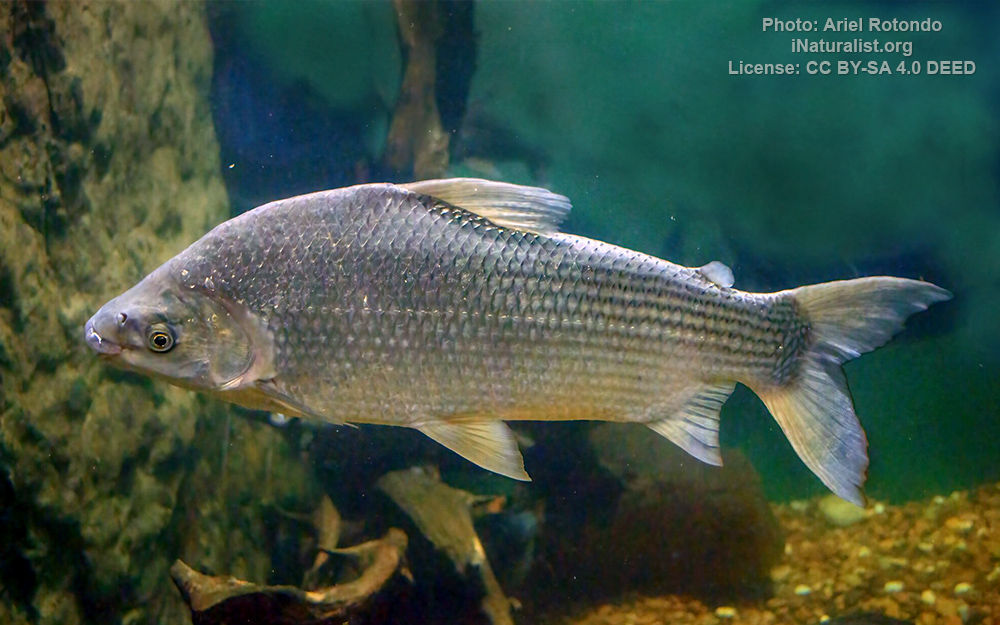Streaked Prochilod
(Prochilodus lineatus)

Classification
General data
Prochilodus lineatus, the streaked prochilod, is a species of ray-finned fish in the family Prochilodontidae. It is native to the Paraná—Paraguay and Paraíba do Sul river basins in South America. It performs long breeding migrations and supports very important fisheries.
In Spanish its common name is sábalo; in Brazil it receives the names curimbatá, curimba, corimbatá or grumatã. In the United States it is also known by the technical synonym Tarpon prochilodus. There are other species of fish with the common name sábalo; P. lineatus is therefore distinguished sometimes as sábalo jetón (colloquial Spanish for big-mouth) or chupabarro (mud-sucker).
P. lineatus reaches up to 80 cm (2.6 ft) in length and 9 kg (20 lb) in weight. A common length is about 45 cm (1.5 ft).
Its body is tall and compressed, greenish-gray (lighter in the belly), with yellowish green fins. Its mouth is circular and projects towards the front; it has two series of small teeth.
This fish prefers deep waters and it is illiophagous, i.e. it sucks and eats organic mud, for which its mouth is especially adapted. This incidentally makes it difficult to fish with a bait. It migrates in large banks, looking for warm waters during the spring in order to lay its eggs.
P. lineatus is considered the key species of the Paraná River, since it forms the base of the food chain that ends with larger fish like the surubí catfish (Pseudoplatystoma) and golden dorado (Salminus brasiliensis). Regulations in place in Santa Fe and Entre Ríos, Argentina, have proven ineffective to preserve the species, which is being severely exploited, both for internal consumption and for export. Experts estimate that capturing 20,000 tonnes of sábalo per year is the upper limit of sustainability. Exports, however, of about 13,000 tonnes in 1998, grew to 34,000 tonnes in 2004, after the depreciation of the Argentine peso caused by the economic crisis tripled its local value.
As the fish population dwindles, fishermen who depend on their captures for their livelihood are keeping smaller specimens, often not mature and which therefore have had no time to reproduce.










